|
Printables |
PowerPoints |
Online exercises |
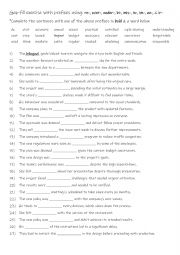
|
Gap-fill exercise with prefixes using: re-, over-, under-, bi-, mis-, in-, im-, un-, & ir-
Students read the sentences, then complete them with the correct prefix and given words in bold. This exercise is quite challenging, so it is only suitable for B1+-B2 levels. Answers on page 2.
Level: intermediate
Age: 12-100
Type: worksheet
Downloads: 121
|

|
15 time linkers practise for B1 level students
students first look at the 15 time linkers, then they read the sentences to which is the correct or most suitable linking word to complete the sentences. Sometimes more than one conjunction is suitable. Answers on page 2.
Level: intermediate
Age: 12-100
Type:
Downloads: 121
|
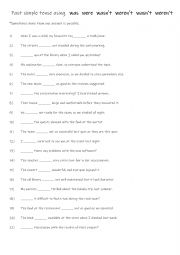
|
A1 Past simple tense using: was, were, was not & were not
Students read the sentences and complete them with the correct form of verb to be. Answers on page 2.
Level: elementary
Age: 8-100
Type: worksheet
Downloads: 121
|
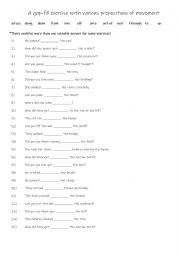
|
A2-B1 A gap-fill exercise with 12 prepositions of movement
Students familiarise themselves with the 12 prepositions of movement, then they read the sentences to see which prepositions is needed to complete the sentences. Answers on page 2.
Level: elementary
Age: 8-100
Type:
Downloads: 121
|
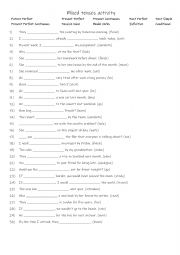
|
B1 -B2 10 Mixed tenses
Students familiarise themselves with the 10 tenses and their uses. Then they read the sentences to see which tense is needed to complete then gap-fill with the given verb. Each tense is used 3 times. Answers on page 2.
Level: intermediate
Age: 8-100
Type:
Downloads: 121
|
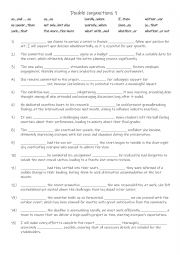
|
B2-C1 15 double conjunctions part 1
Double conjunctions are vital for creating balance and emphasis in language, making them an important tool for more advanced speakers. Conjunctions like "as...as" and "the more...the more" allow students to express precise comparisons or proportional relationships between ideas, making their communication clearer and more impactful. Pairs such as "...
Level: advanced
Age: 10-100
Type:
Downloads: 121
|
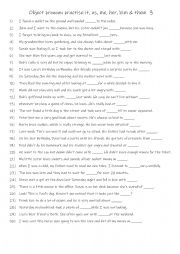
|
A1-A2 Object pronoun practise it, us, me, her, him & them 3
Practising object pronouns like it, us, me, her, him, and them is essential for building clear and natural sentences in English. Object pronouns replace nouns to avoid repetition and make sentences smoother, which is crucial for effective communication. By mastering these, you can better describe actions involving people and things, making everyday...
Level: elementary
Age: 8-100
Type:
Downloads: 121
|
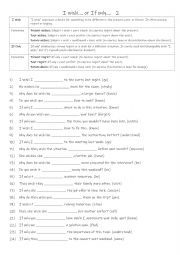
|
B1-B2 I wish�. or If only�. 2
Students should learn "I wish�" and "If only�" because these structures enable them to express regrets, desires, and hypothetical situations, adding emotional depth and complexity to their language (e.g., I wish I knew the answer or If only I hadn�t missed the train). They help students communicate feelings like hope, frustration, or disappointment...
Level: elementary
Age: 10-100
Type:
Downloads: 121
|
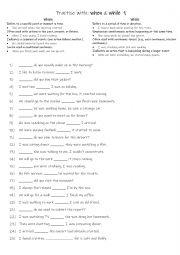
|
A2-B1 Practise with when & while 1
Students should learn when and while as they are essential for describing time relationships and creating complex sentences. When is used to pinpoint specific moments or sequences of events, such as "I heard a noise when I opened the door." While is used to describe actions happening at the same time, such as "She was singing while he was playing t...
Level: elementary
Age: 9-100
Type:
Downloads: 121
|
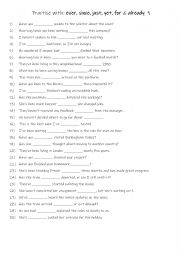
|
A2+-B1 Practise with ever, since, just, yet, for & already 1
Students should learn ever, since, just, yet, for, and already because they are essential for expressing time relationships and mastering perfect tenses. These words allow students to ask about experiences (ever), specify starting points (since), describe recent actions (just), highlight incomplete tasks or questions (yet), express durations (for),...
Level: intermediate
Age: 9-100
Type:
Downloads: 121
|
|
|
|
|












